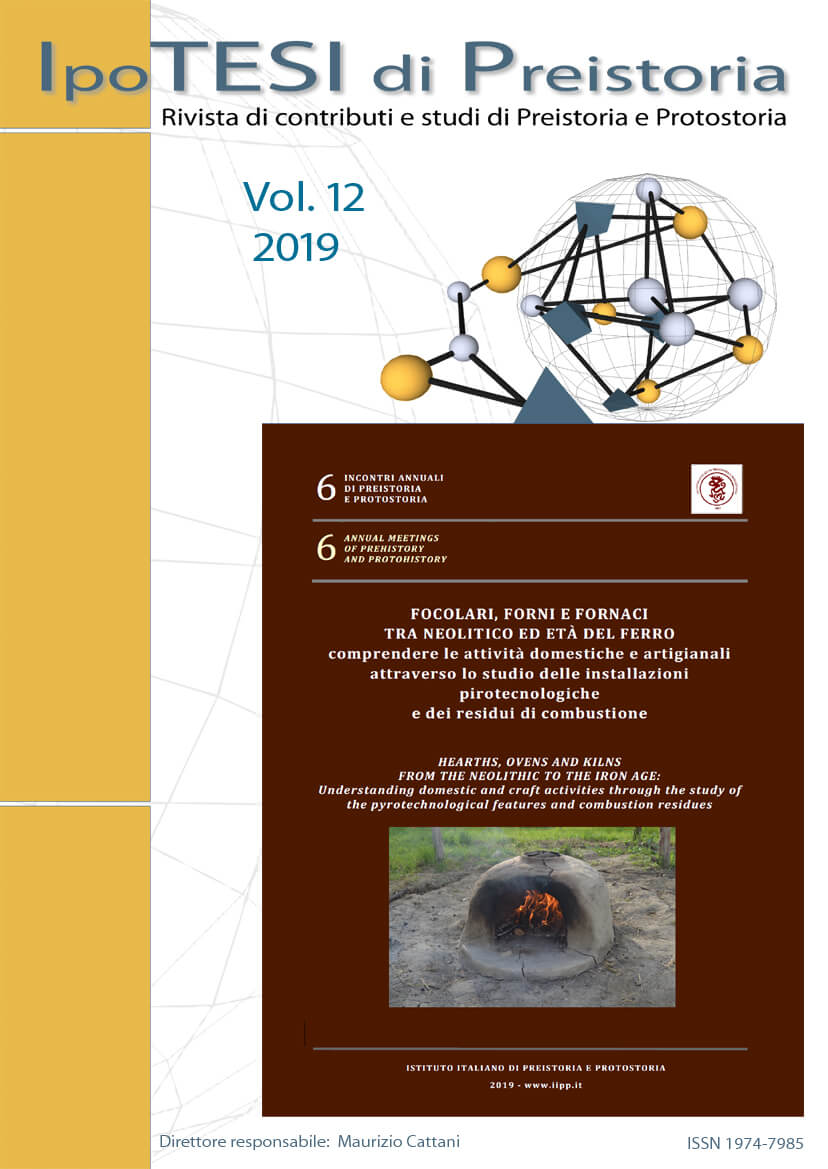Hearth plate from the pile-dwelling site of Palù di Livenza
DOI:
https://doi.org/10.6092/issn.1974-7985/10255Keywords:
Lugo di Romagna, Neolitico antico, cultura di Fiorano, strutture di combustione, gestione del fuocoAbstract
The Palù di Livenza wetland lies at the foot of the Cansiglio plateau in the Pordenone area in north-east Italy. It preserves a Neolithic pile-dwelling settlement. Thanks to the richness of deposits, Palù di Livenza is inscribed on the World Heritage List of UNESCO in the transnational serial property ‟Prehistoric pile-dwellings around the Alps” together with other 18 northern Italian localities. The latest investigations, carried out at the Sector 3 since 2013, have revealed a well-preserved stratigraphic sequence with three main phases of pile-dwellings ranging between the second half of the 5th and the first half of the 4th millennium cal BC. The paper presents the remains of a combustion feature, probably a hearth plaster plate, found during the last excavations campaigns in the abandonment levels attributed to the Late Neolithic phase.Downloads
Published
2019-12-31
How to Cite
Tasca, G., Bassetti, M., Degasperi, N., Salvador, S., & Micheli, R. (2019). Hearth plate from the pile-dwelling site of Palù di Livenza. IpoTesi Di Preistoria, 12(1), 17–26. https://doi.org/10.6092/issn.1974-7985/10255
Issue
Section
Conference papers
License
Copyright (c) 2019 Giovanni Tasca, Michele Bassetti, Nicola Degasperi, Sergio Salvador, Roberto Micheli
Copyright for articles published in this journal is retained by the authors, with first publication rights granted to the journal. The authors agree when submitting their work that it can be copied by anyone for noncommercial purposes but only if proper credit is given. Thus by virtue of their appearance in this open access journal, the articles have been declared free to use, with proper attribution, in noncommercial settings. All authors are responsible for the content of their work, including proper citation, attribution and usage permissions.
This journal is licensed under a Creative Commons Attribution NonCommercial 4.0 International License.
See also our Open Access Policy.
See also our Open Access Policy.





